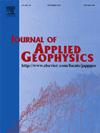A novel geodetic approach for determination the marine internal gravity: The “seawater layer” method
IF 2.2
3区 地球科学
Q2 GEOSCIENCES, MULTIDISCIPLINARY
引用次数: 0
Abstract
The ocean, especially the deep ocean, as an undeveloped earth space and resource, plays an increasingly prominent role in energy security and scientific development. Deep sea exploration is a strategic need for the construction of marine science and technology. The internal gravity field of the ocean is important in geophysics, geodesy, and oceanography. Classical physical geodesy mainly focuses on the solution of the geodetic boundary value problem, which is usually given by the theorems of Stokes and Molodenskii. Solving the internal gravity field of the ocean is a problem of solving the internal potential of the earth, to which theoretical methods of classical geodesy cannot be applied. To solve this limitation, the concept of “seawater layer” is introduced to calculate the internal ocean gravity. Taking the South China Sea as the experimental area, using high-resolution data of the Digital Earth Model, combined with Newton's integration method and spherical harmonic expansion algorithm, the internal ocean gravity field in the South China Sea was determined: The accuracy of the “seawater layer” method to remove - restore the ocean surface gravity is evaluated and the difference RMS is 4.06mGal at the depth of 500 m, 9.56mGal at 1000 m, 5.05mGal at 2000 m, 8.38mGal at 3000 m, and 7.01mGal at 4000 m, and the entire regional difference RMS error is 7.57mGal, indicated good consistency and the reliability; Based on this theory, the 3D distribution of the South China Sea internal Gravity Field was obtained by combining sea water density/depth and sea-surface/seabed gravity data, providing a theoretical basis and algorithm model for seabed gravity measurement and underwater navigation.
求助全文
约1分钟内获得全文
求助全文
来源期刊

Journal of Applied Geophysics
地学-地球科学综合
CiteScore
3.60
自引率
10.00%
发文量
274
审稿时长
4 months
期刊介绍:
The Journal of Applied Geophysics with its key objective of responding to pertinent and timely needs, places particular emphasis on methodological developments and innovative applications of geophysical techniques for addressing environmental, engineering, and hydrological problems. Related topical research in exploration geophysics and in soil and rock physics is also covered by the Journal of Applied Geophysics.
 求助内容:
求助内容: 应助结果提醒方式:
应助结果提醒方式:


